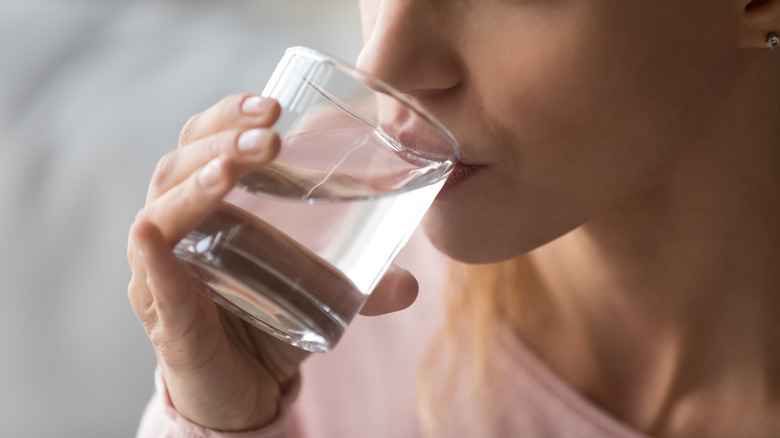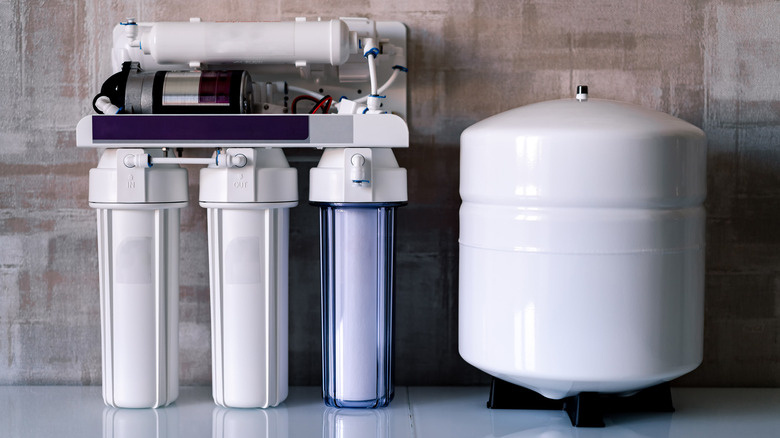Why Filtering Water Doesn't Necessarily Make It Safe To Drink
Despite its ubiquity, water may be the most underrated substance on Earth. People complain that it's boring and even unappetizing because it doesn't taste like anything. Some folks have even built businesses by putting down water. Many of us take our drinking water for granted, but we might not have that privilege for much longer. The World Bank reports that water quality is deteriorating on a global level due to widespread pollution.
Contamination by bacteria, chemical waste, sewage, and plastics puts people at risk of dangerous waterborne diseases. The Centers for Disease Control and Prevention (CDC) list a number of parasitic, bacterial, and viral contaminants that can poison water supplies, including E. coli, salmonella, giardia, and norovirus. Ingesting these can cause gastrointestinal ailments that make their presence known through vomiting, diarrhea, and cramps. Obviously, it's in everyone's best interests to eliminate these threats, which explains a PR Newswire report that sales of portable water filters are rising. But while filtration is important, it's often not enough to make water safe to drink. It turns out that some truly nasty things can still slip through.
Filters do not disinfect water
Water filters are great at removing certain contaminants, but not everything. The National Park Service (NPS) notes that most water filters work by passing the liquid through a screen with extremely small holes in it. This easily removes large contaminants like dirt and sand, and can even remove some bacteria and protozoa like giardia. However, viruses are so small that they can pass right through a filter screen.
The most effective type of water filter is a reverse osmosis system, which passes the water through a series of screens, an activated carbon filter, and a mesh membrane that can remove microscopic contaminants. Have you ever noticed that Starbucks water tastes way better than the stuff you get at home? It's because they use reverse osmosis. Fresh Water Systems confirms that reverse osmosis can do more than a regular water filter, but there are other systems that are even more effective.
One is UV purification, which uses ultraviolet light to kill microorganisms in the water. The NPS also mentions disinfecting agents like iodine and chlorine that you can add to your water. However, the most effective way to disinfect water is also the simplest. Boiling your water is a surefire way to kill any contaminating organisms. The NPS recommends boiling your water for one minute, unless you are at an elevation over 6,500 feet, in which case you should boil it for three minutes. It's an incredibly simple step, but it could save a life.

